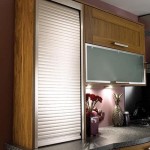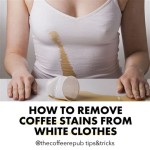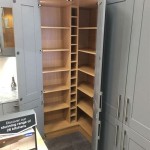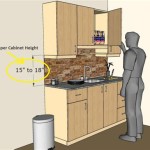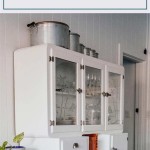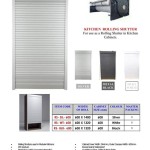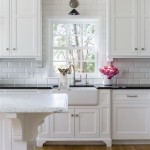Are Shaker Cabinets Good Quality? A Comprehensive Examination
Shaker cabinets have consistently remained a popular choice in kitchen and bathroom design for many years. Characterized by their simple, clean lines and emphasis on functionality, they often evoke a sense of timelessness and versatility. However, determining whether Shaker cabinets are considered "good quality" necessitates a deeper understanding of the factors that contribute to cabinet quality in general, and how Shaker-style cabinets measure up against these criteria. This article will explore the key aspects of cabinet construction, materials, and design considerations to assess the inherent quality and potential longevity of Shaker cabinets.
Cabinet quality is not merely aesthetic; it encompasses the durability of the materials used, the precision of the construction, and the long-term performance under normal usage conditions. Factors such as the type of wood, joinery techniques, finishing processes, and hardware choices all play a crucial role in determining the overall quality and expected lifespan of any type of cabinet, including Shaker cabinets. Thus, a comprehensive evaluation requires a detailed assessment of these elements.
Materials Used in Shaker Cabinet Construction
The primary material used in Shaker cabinet construction profoundly impacts their quality and durability. Solid wood, plywood, and medium-density fiberboard (MDF) are the most common materials used for cabinet boxes and doors. Solid wood cabinets, typically constructed from hardwoods like maple, oak, cherry, or walnut, are generally considered the highest quality option due to their inherent strength, resistance to warping, and potential for refinishing. However, solid wood cabinets can be more expensive and susceptible to expansion and contraction with changes in humidity.
Plywood, especially when constructed with multiple layers (multi-ply plywood), offers significant strength and stability. It is less prone to warping than solid wood and can provide a more stable base for cabinet construction, particularly in environments with fluctuating humidity levels. High-quality plywood, often with hardwood veneers, can offer a comparable aesthetic to solid wood at a more reasonable price point.
MDF is an engineered wood product made from wood fibers compressed with resin. It is a cost-effective option that is very smooth and uniform, making it ideal for painted finishes. While MDF is stable and less prone to warping than solid wood, it is generally less durable and more susceptible to damage from moisture. MDF is typically used for cabinet doors and drawer fronts, especially in painted Shaker cabinet designs.
The quality of the chosen material greatly influences the longevity and performance of Shaker cabinets. Cabinets constructed from solid hardwood or high-quality plywood will generally last longer and withstand more wear and tear than those constructed from lower-grade materials like particleboard or thin MDF. The material choice should be appropriate for the intended use and environmental conditions.
Construction and Joinery Techniques
Beyond the materials, the construction and joinery techniques employed are paramount in determining the structural integrity and long-term durability of Shaker cabinets. Well-constructed cabinets utilize strong and precise joinery methods that ensure the cabinets remain square, stable, and resistant to sagging or separation over time. Several joinery techniques are commonly used in cabinet construction, each with its own advantages and disadvantages.
Dovetail joints are considered one of the strongest and most aesthetically pleasing types of joinery. They are commonly used in drawer construction to provide superior strength and prevent the drawer box from pulling apart. A properly executed dovetail joint significantly enhances the durability of a drawer.
Mortise and tenon joints are another traditional and robust joinery method used for connecting cabinet frames and doors. This joint involves fitting a projection (tenon) from one piece of wood into a corresponding hole (mortise) in another piece. Mortise and tenon joints provide excellent strength and stability, particularly when reinforced with glue.
Dado joints are frequently used to connect cabinet sides to the top, bottom, and shelves. A dado is a groove cut into one piece of wood to receive another piece. Dado joints provide a strong and stable connection that helps to prevent racking and sagging. Blind dado joints, where the groove does not extend to the edge of the piece, offer a cleaner, more refined aesthetic.
Screws and glue are often used in conjunction with other joinery techniques to further reinforce the cabinet structure. Screws should be appropriately sized and spaced to provide adequate holding power. High-quality wood glue should be used to create a strong and permanent bond between the wood components.
Cabinets constructed with solid joinery techniques such as dovetails, mortise and tenon, and dados will generally be more durable and long-lasting than those that rely solely on screws or staples. The quality of the joinery is a critical indicator of the overall quality of Shaker cabinets.
Finishing and Hardware Considerations
The finishing process and hardware chosen for Shaker cabinets significantly contribute to their overall quality and longevity. A well-applied finish protects the cabinets from moisture, scratches, and other damage, while also enhancing their aesthetic appeal. The choice of hardware, such as hinges, drawer slides, and knobs or pulls, affects the functionality and durability of the cabinets.
The finishing process typically involves several steps, including sanding, priming, and applying a topcoat. The quality of the finish depends on the type of material used, the number of coats applied, and the skill of the finisher. Durable finishes, such as catalyzed conversion varnish or polyurethane, offer excellent protection against moisture and wear. A properly applied finish will also resist chipping, peeling, and fading.
Painted finishes are common on Shaker cabinets, particularly on MDF doors and drawer fronts. The quality of the paint and the application process are crucial to achieving a smooth, durable, and long-lasting finish. Multiple coats of primer and paint are typically required to ensure adequate coverage and protection.
Stained finishes are often used on solid wood or wood veneer Shaker cabinets to highlight the natural grain and character of the wood. The quality of the stain and the application process will affect the appearance and durability of the finish. A clear topcoat is typically applied over the stain to protect the wood and enhance its luster.
Hardware choices can significantly impact the functionality and lifespan of Shaker cabinets. High-quality hinges and drawer slides will ensure smooth and reliable operation for many years. Soft-close hinges and drawer slides are a popular upgrade that prevents slamming and reduces wear and tear on the cabinets.
The choice of knobs or pulls can also affect the aesthetic appeal and functionality of Shaker cabinets. Simple, understated hardware is typically chosen to complement the clean lines of Shaker-style cabinets. Durable materials like stainless steel or brushed nickel are often preferred for their resistance to corrosion and wear.
In summary, the quality of Shaker cabinets hinges on the selection of appropriate materials, proper construction and joinery techniques, and the application of durable finishes and hardware. When these elements are carefully considered and executed, Shaker cabinets can provide years of reliable service and aesthetic appeal.

Shaker Cabinets Vs Traditional A Cabinet Style Showdown

Shaker Kitchen Cabinets Timeless Design For Modern Kitchens

Shaker Style Cabinets What They Are How To Them

Shaker Style Cabinets What They Are How To Them

Slab Vs Shaker Cabinets Style Cost And Durability Compared

Shaker Cabinets Vs Traditional Which Style To Choose Hci

Pros And Cons Of Shaker Style Cabinets For Your Kitchen

What Are Shaker Style Cabinets A Guide To Timeless Kitchen Cabinet

Slab Vs Shaker Cabinets Style Cost And Durability Compared

Why Are Shaker Cabinets So Popular Rbc Cabinetry
Related Posts

